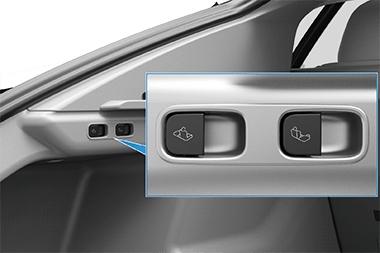Front and Rear Seats
Correct Driving Position
The seat, head support, seat belt and airbags work together to maximize your safety. Using these correctly ensures greater protection.

Position the seat so you can wear the seat belt correctly, while being as far away from the front airbag as possible:
- Sit upright with both feet on the floor and the seat back in an upright position.
- Make sure you can easily reach the pedals and that your arms are slightly bent when holding the steering yoke (or steering wheel). Your chest should be at least 10 inches (25 cm) from the center of the airbag cover.
- Place the shoulder section of the seat belt mid-way between your neck and your shoulder. Fit the lap section of the belt tightly across your hips, not across your stomach.
Model S front seats include integrated head supports that cannot be adjusted or removed.
Adjusting the Front Seats

- Move seat forward/backward and adjust the seat’s height and tilt angle up/down.
- Adjust backrest.
- Adjust lumbar support.
To adjust the front passenger seat using the touchscreen, touch and use the arrows next to the front passenger seat visualization to move the seat forward or backward.
Calibrating Seats
Folding Rear Seats
Model S has a split rear seat that can fold forward.
Before folding, remove items from the seats and the rear footwell. To allow the rear seats to fold completely flat, you may need to move the front seats forward. To fold a rear seat, push the corresponding button on the back of the seat.

You can also fold the rear seats fully forward by pressing the corresponding switch located on the left side of the rear trunk. Pressing the switch causes the seat to unlatch. You can then push it downward to lay it fully flat.

To return the seats to their upright position, pull upwards until it locks into place. To confirm that the seat is locked in the upright position, try pulling it forward.
Head Supports
The front seats include integrated head supports that you cannot adjust.
The rear outboard seating positions include an adjustable head support that can be raised/lowered or removed. The head support should always be raised and locked into position (so that the center is aligned with the center of the occupant's head) when occupied by a passenger that is not in a child safety seat.
Lift the head support to the desired position. To lower the head support, press and hold the button on the base of the outer post while pushing down on the head support.

To remove a head support:
Seat Heaters
All seats contain heating pads. In addition, both front seats are ventilated. You can control seat heaters in all seating positions using the touchscreen.
